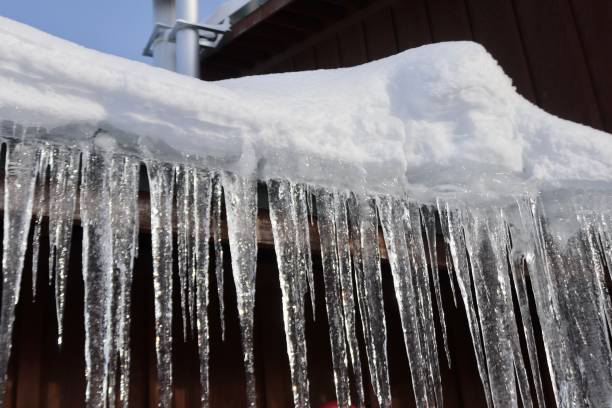Protecting Pipes from Cold Weather Damage: Key Approaches
Protecting Pipes from Cold Weather Damage: Key Approaches
Blog Article
This great article following next involving How to prepare your home plumbing for winter weather is indeed stimulating. Give it a try and draw your own conclusions.

Cold weather can damage your plumbing, especially by freezing pipes. Right here's just how to prevent it from happening and what to do if it does.
Introduction
As temperature levels decrease, the danger of icy pipelines rises, possibly bring about pricey repair work and water damages. Comprehending how to prevent icy pipes is crucial for home owners in chilly environments.
Recognizing Icy Pipes
What triggers pipes to freeze?
Pipes ice up when subjected to temperature levels listed below 32 ° F (0 ° C) for expanded durations. As water inside the pipes freezes, it expands, putting pressure on the pipe walls and potentially causing them to burst.
Dangers and problems
Frozen pipes can cause water system disturbances, residential property damage, and costly repairs. Ruptured pipelines can flooding homes and trigger substantial structural damage.
Signs of Frozen Pipes
Identifying icy pipelines early can avoid them from rupturing.
Exactly how to determine icy pipelines
Search for reduced water flow from faucets, uncommon odors or sounds from pipelines, and noticeable frost on subjected pipes.
Prevention Tips
Protecting susceptible pipelines
Cover pipes in insulation sleeves or utilize heat tape to secure them from freezing temperature levels. Concentrate on pipes in unheated or external locations of the home.
Heating methods
Maintain interior areas appropriately heated, especially areas with plumbing. Open closet doors to allow warm air to flow around pipelines under sinks.
Safeguarding Outdoor Pipes
Yard hose pipes and outdoor taps
Detach and drain garden pipes before winter season. Mount frost-proof faucets or cover outside taps with protected caps.
What to Do If Your Pipes Freeze
Immediate activities to take
If you presume frozen pipelines, maintain taps open up to alleviate stress as the ice melts. Use a hairdryer or towels taken in warm water to thaw pipes gradually.
Long-Term Solutions
Architectural adjustments
Take into consideration rerouting pipes far from outside walls or unheated areas. Add additional insulation to attics, cellars, and crawl spaces.
Upgrading insulation
Purchase top notch insulation for pipelines, attic rooms, and walls. Correct insulation helps preserve constant temperatures and minimizes the risk of frozen pipes.
Final thought
Protecting against frozen pipelines calls for positive measures and fast reactions. By understanding the reasons, indicators, and preventive measures, homeowners can secure their pipes during winter.
6 Proven Ways to Prevent Frozen Pipes and Protect Your Home
Disconnect and Drain Garden Hoses
Before winter arrives, start by disconnecting your garden hoses and draining any remaining water. Close the shut-off valves that supply outdoor hose bibs and leave the outdoor faucet open to allow any residual water to drain. For extra protection, consider using faucet covers throughout the colder months. It’s also important to drain water from any sprinkler supply lines following the manufacturer’s directions.
Insulate Exposed Pipes
Insulating your pipes is an effective way to prevent freezing. Pipe insulation is readily available at home improvement stores and is relatively inexpensive. Pay close attention to pipes in unheated areas such as the attic, basement, crawl spaces, or garage. Apply foam insulation generously to create a buffer against the cold. You can also wrap your pipes in heat tape or thermostat-controlled heat cables for added warmth.
Seal Air Leaks
Inspect your home for any cracks or openings that could let in cold air. Seal any holes around the piping in interior or exterior walls, as well as the sill plates where your home rests on its foundation. Additionally, make sure to keep your garage door closed unless you’re entering or exiting. Leaving it open creates a significant air leak that can lead to frozen pipes.
Allow Warm Air Circulation
During cold snaps, it’s essential to allow warm air to circulate evenly throughout your home. Leave interior doors ajar to promote better airflow. Open kitchen and bathroom cabinets to help distribute heat consistently around the rooms. If you have small children or pets, be sure to remove any household chemicals or potentially harmful cleaners from open cabinets for safety.
Let Faucets Drip
A small trickle of water can make a big difference in preventing ice formation inside your pipes. When temperatures drop significantly, start a drip of water from all faucets served by exposed pipes. This continuous flow helps prevent the water from freezing. Additionally, running a few faucets slightly can relieve pressure inside the pipes, reducing the chances of a rupture if the water inside does freeze.
https://choateshvac.com/6-proven-ways-to-prevent-frozen-pipes-and-protect-your-home/

Do you really like reading up on Winter Plumbing Precautions: Preventing Frozen Pipes? Write feedback down the page. We will be delighted to listen to your responses about this posting. Hoping that you come back again in the near future. Sharing is caring. You won't know, you could be helping someone out. Bless you for your time. Don't hesitate to check up our website back soon.
Apply Now Report this page